Soon after I finished writing my review for Social Policy magazine of the new Robert Cherny biography of Harry Bridges, I read in an October 1 memo to all International Longshore and Warehouse Union (ILWU) members that the union had gone into court on September 30 and filed for bankruptcy under Chapter 11. A ten-day trial in Portland Oregon in 2019 determined that the ILWU had engaged in illegal tactics that operationally disrupted ICTSI and the Port of Portland. The jury awarded a Philippine owned stevedoring company, International Container Services Inc. (ICTSI), $93.6 million in damages. The union challenged that amount and in March of 2020, a judge determined the maximum amount owed by the union was just over $19 million. The ILWU was prepared to accept that amount but ICTSI rejected the ruling and a new trial was set in which the terminal operator was seeking between $48 million and $142 million in damages.
The dispute arose out of ICTSI’s refusal almost ten years earlier to bring two electrician jobs; plugging and unplugging refrigerated containers, under the ILWU master contract. For years the two jobs had been represented by the International Brotherhood of Electrical Workers (IBEW) with excellent wages and benefits.
As my review points out, there are thousands of non-union trucking, warehousing and information technology jobs in the maritime supply chain that need organization. Such organization will require the cooperation of multiple unions. Could financial bankruptcy lead to rethinking bankrupt strategy? As longshore workers like to ponder: “What would Harry Bridges say?”
—
The cranes wait for a ship – when it arrives it will be loaded/unloaded in short order with port layovers as short as a day or two. Port of Long Beach, California. Photo: Robert Gumpert 19 Nov. 08
In 2005, I accompanied the International Officers of the ILWU to Teamster HQ in Washington DC. We were to meet with Teamster President James Hoffa Jr. to discuss issues of jurisdiction and cooperation in organizing. We were admitted into the “Marble Palace” of the International Brotherhood of Teamsters (IBT) and ushered into a stately board room that featured portraits of past IBT Presidents most of whom had been indicted and/or served time in jail for various and sundry corrupt activities. When Hoffa Jr. joined us, he immediately greeted our President Jim Spinosa and stated: “You know my father, James Hoffa Sr., and Harry Bridges were good friends. I remember as a young boy watching them on their hands and knees in our living room maneuvering Manhattan sized phone books around to indicate the links in the logistics supply chain between trucking, warehousing and dock work.” Not what I expected to hear from the son of the infamous Teamster leader. I thought at the time: Wow: A Red and a Racketeer, nevertheless they were both brilliant strategic thinkers pondering how to increase working class power!
Robert Cherny, a retired Professor from San Francisco State, has written a new detailed biography of the iconic ILWU leader. He starts with Bridges’ early formative years in Melbourne Australia, his time at sea, and then his arrival in San Francisco where he takes up working “Alongshore” and participates in leading the organizing over 10 years that leads up to the great West Coast maritime strike of 1934 and the San Francisco General Strike. All these were seminal events that led to the victory of West Coast dockworkers and the establishment of one of the most powerful and progressive unions in the United States and western Canada. Much of the book is taken up with the ceaseless efforts of the employers and their state agents in the FBI, Justice Department, and Immigration to deport Bridges, over his alleged membership in the Communist Party USA. Cherny, who had access in the nineties to Comintern records in Moscow, concludes that it was not clear that Bridges was a member of the Party, although his politics where often consonant with the CP.
The story of Bridges is the not uncommon tale in the annals of labor history of a labor leader of the left who remains beloved by the members regardless of his/her political leanings. The bottom line for the member is: “He may be a red, but he has steered my union in a good direction, and my living standards are proof of it.” The famous case of the United Electrical Workers (UE) District 8 leader William Sentner in Iowa is a similar story. Sentner was an open Communist who weathered vicious red baiting because of his leadership prowess and because he delivered for his members.
Bridges is extolled in ILWU lore as a believer in the wisdom of the rank and file. “Bridges shared leadership with others, as well as sharing decision making with rank-and-file members through such institutions as the longshore caucus and frequent membership referenda.” He is also credited with fighting to break down barriers to the entrance and equal standing of African Americans in the union. This was certainly true in the Bay Area and San Francisco based Local 10, his home local. Local 10 is a majority African American (A-A) local today and led by A-A officers. “He was most successful in his own local in San Francisco, less so with Local 8 – Portland and Local 13 – Los Angeles, where his commitment to racial justice ran up against his commitment to local autonomy.” This history with respect to Los Angeles Local 13 is well documented in Jake A. Wilson’s powerful history, “Solidarity Forever? Race, Gender, and Unionism in the Ports of Southern California”
But Bridges and his cohort who built the union were much more than principled ideological warriors who stood for racial unity and rank and file control. They were serious students of class forces, the industries they worked in and the concrete conditions that confronted them. In fact, this ability to make a concrete analysis of conditions and proceed to develop strategies to advance working class power is a key attribute of successful left labor actors. In other words, they needed to know the industry better than their class nemeses, their employers. And often times they were able to anticipate the class interests and needs of those employers better that the employers themselves! Being a practicing Marxist materialist means that you do the careful industry studies that Marx and particularly Engels engaged in.
In an essay written in 1874, the German philosopher Friedrich Nietzsche takes aim at “The Uses and Disadvantages of History for Life” He criticizes those that would engage in monumental history: “Monumental history rejects the disappointments and pressures of the present by taking safe harbor in the imagined company of great figures of the past.” Therefore, the important thing to search for in the Cherny biography is some clues as to how the ILWU can take on the challenges it faces today. What does Harry’s analysis and social practice have to guide us in dealing with the union’s mammoth challenge of automation and the integrated supply chain? Chapters 15 and 17 respectively of Cherny’s work sketch the approach of Bridges to the containerization of waterfront work and its impact on warehouse work off dock.
A container (cans) loading dock. Massive cranes moving containers on and off ships, allowing for ships remaining in port for only one or two days. Port of Long Beach, California. Photo: Robert Gumpert 19 Nov. 08
As Cherny points out by the late 1950’s the ILWU was facing the challenge of mechanization: “By then Bridges, other ILWU officers and many longshore workers were focused on a new, transformative, and potentially disruptive technology: containerization, the most important development in ocean shipping since the steam engine” Previously cargo was loaded onto ships and stowed in pieces. Often loading a ship could take two weeks. Now the product was being stowed in containers for loading, the process of loading (or unloading) a ship was made much simpler and less labor intensive. Often a ship could be unloaded and loaded in a 24-hour period. Employment numbers changed dramatically up and down the West Coast. In 1960 at the advent of containers there were about 26,000 dockworkers in California, Oregon and Washington. In 1980, when containerization had been established as the dominant mode of ocean shipping, the employment number was about 11,000. By 2020 that number rose by 47% to about 15,000, but cargo volumes had increased by almost 700%!
A longshore caucus, purposefully assembled to deal with looming mechanization, met for three days in October of 1957. It issued a special report that stated: “It is not a good public position, whether before an arbitrator or in a strike, to be fighting to retain what the employer will label ‘unnecessary men” and “featherbedding.” Further the report stated: “Do we want to stick with our present policy of guerrilla warfare resistance or do we want to adopt a more flexible policy in order to buy specific benefits in return?” Cherny states that, “The report advocated for more flexibility.”
Today’s technology challenge is the introduction of robots. In the 2008 negotiations with the Pacific Maritime Association (PMA), the ILWU agreed to the introduction of robots on the terminals. And several terminals in Los Angeles Long Beach – COSCO and TraPac – have mechanized. When Maersk, the largest ocean carrier in the world announced in 2019 its intentions to robotize Pier 400 in Los Angeles, Local 13 ILWU mobilized thousands of its members to engage in militant street demonstrations targeting the LA Harbor Commission and the LA City Council in an attempt to block the regulatory approvals for the project. While ultimately unsuccessful, the protest did place the matter of automation front and center again in the recently concluded coastwise negotiations with the PMA for a new labor agreement. One outcome of the agreement is stiffer penalties for employers who do not assign maintenance and repair work to ILWU mechanics, and an agreement to build automation training centers in the three principal port zones: LA, Bay Area, and Seattle Puget Sound.
In a convention that preceded the aforementioned longshore caucus in 1957, Martin Callaghan from Local 10 commented, “I’d like to see them install all of this machinery and equipment to do the work, to make it easier for us guys around here. But let’s bear in mind this: let’s make these machines work for us guys, not for the employers.” Robert Rohatch also from Local 10 added, “Pensions and shorter working hours are the only answer to mechanization.”Enhancing the pension means that more senior workers retire and clear the field for younger workers. Reducing the workday, but maintaining the same compensation, helps to deal with job attrition that inevitably follows the substitution of machines for human labor. But there is a larger question of the changing structure and character of the employers that requires the leadership and vision of union officers schooled in a materialist analysis of the industry.
Tank cars and containers: Rail yard east of the Port of Long Beach. Long Beach, California. Photo: Robert Gumpert 18 November 2008
Cherny’s Chapter 17 touches on the issue of Container Freight Stations and the supplement negotiated by the union to deal with the impact of containerization of cargo handling hours for ILWU members. The stuffing and stripping of containers was most efficiently done either at the point of production of the goods, or at the point of delivery. In the early days of containerization many containers had less than full loads (“shippers load”) and therefore multiple consignees. The work of loading (stuffing) and unloading (stripping) containers was considered by the union to be work traditionally done on or near dock. In 1969 the union negotiated a Container Freight Station Supplement (CFSS) in an attempt to capture this work, often in conflict with the Teamsters. This CFSS language had a provision that specified that work within a 50-mile radius had to be done under the supplement’s conditions by ILWU labor. This was similar to language won by the International Longshore Association (ILA) on the East Coast. This attempt on both coasts to deal with the impact of technology on freight handling of maritime cargo ran afoul of both the National Labor Relations Act and the Federal Maritime Commission. Both bodies ruled that the language was unenforceable.
But there is a bigger problem. Cherny describes the problem by citing an engineer that he talked to: “one engineer described to me such an ideal situation: a container is filled with athletic shoes at a factory in Pakistan and unloaded in a big-box store in the Midwest. Such long-haul containers constituted more that 80 percent of all container shipping and were not at issue” In other words such “shippers load” were exempted from coverage under the CFSS. This is a critical issue for the future of the union and points to its mission as a maritime logistics chain union not an isolated dockworkers club. Today it is clearer than ever that 95% of goods flowing into the ports, bound for giant retailers like Wal-Mart, Amazon, Target etc., are full-load containers being unstuffed by employees of those retailers, in their warehouses or in third party logistics providers, that they employ.
The most stunning fact is that the giant ocean going carriers are all adapting their business models to the changing retail landscape and building or acquiring inland logistics capacity: In a fascinating 2019 Wall Street Journal article, Maersk reveals its plans to achieve a company makeover from 80% of their earnings coming from container shipping to “Hopefully a couple of years from now will be much closer to a 50-50 scenario between ocean and non-ocean services,” Chief Executive Soren Skou said. Maersk already runs twenty warehousing and distribution centers in California, New Jersey, Texas, and Georgia. Five of them operate in the Southern California basin.
Maersk and other giant ocean carriers are all integrating their operations inland to respond to the specter of Amazon, the giant e-commerce retailer that is becoming a logistics powerhouse. Amazon employs 850,000 warehouse employees in the US alone. It has air hubs and owns a fleet of air cargo planes. Every major port on the West Coast has a dedicated container yard for Amazon imports. There is speculation that the company will soon buy a fleet of ships. It is already a Non-Vessel Operating Common Carrier (NVOCC), chartering and brokering space on container ships.
Cherny’s Bridges bio pays homage to another great ILWU leader, long time Secretary Treasurer Louis Goldblatt who was part of the March Inland, organizing warehousing on the mainland and one of the architects of the union’s dramatic growth in Hawaii. While Bridges and Goldblatt often had a contentious relationship, Cherny cites Goldblatt’s genius in analyzing the Hawaii situation: “After studying the economic situation in Hawai’i, he (Goldblatt) realized that virtually all economic activity was directly or indirectly controlled by the Big Five (Sugar and Pineapple co.’s). Goldblatt concluded that the ILWU could not win in longshore” until the heart of economic power in those islands, namely the sugar industry had been organized.” The ILWU proceeded to launch huge organizing drives on the sugar and pineapple plantations that made the union the largest and most powerful union on the islands. Consequently, for today’s ILWU, part of securing its future lies in working with other unions like the Teamsters to make sure that Amazon is organized, a mammoth task that requires the best hearts and minds of the whole labor movement.
No union is an island and there is no long-term solution in fortress unionism. The ILWU cannot continue to ensure the wages and benefits of its members without securing unionization for the growth areas in the logistics supply chain. The employment numbers on the West Coast tell this tale in stark relief. In the period between 1980 and 2019 here is the breakdown:
On Dock Employment:
Total employment for (a) registered ILWU members (including Class A/B longshore, clerks and foremen) was 10,245 in 1980. In 2019 the same group of registered employees numbered 15,044. Combined, this is a 47% increase in registered ILWU members, and a 46% increase in working registered ILWU members.
Trends in Off Dock Transport Logistics Employment:
A triple trailer rig on I80 in Utah. Photo: Robert Gumpert 30 November 2015
The most dramatic increases in transport logistics have occurred in three off-dock sectors: Logistics Information Services/Freight Transport Arrangements (FTA), Warehousing and Trucking:
FTA – 1980: 12,816 to 2019: 58,276. This is 355% growth
Warehousing – 1980: 12,738 to 2019: 160,610. This is 1161% growth
Trucking – 1980: 156,808 to 2019: 340,729. This is 117% growth
The future for the ILWU does not lie in building a sand castle on the docks that is being eroded by the shift of cargo handling to work inland. The future lies in marching inland following the containers and using the power and leverage the union still has to organize a whole new group of workers, largely immigrants and people of color. These workers are the future of a new and reimagined ILWU, just as the super exploited workers “alongshore” who shaped up on the docks of San Francisco and the West Coast became the soldiers in the battle to transform labor relations on the docks and beyond. Ensuring a solid future requires working with other unions to secure the supply chain. The recently settled coastwise longshore agreement’s principal triumph was ensuring that maintenance and repair mechanic’s work is ILWU and not the jurisdiction of the International Association of Machinists (IAM). This will result in a few hundred jobs on the waterfront, but the vast unorganized workforce of warehouse workers, truckers and information technology workers remain unorganized, and no one union can organize this maritime logistics workforce alone. During the Cold War attacks on left-led labor unions, the ILWU convention of 1953 ratified “ten cardinal rules” that became the Ten Guiding Principles” of the ILWU. Three of those principles stand in stark contrast with recent practice:
Labor unity is the key to successful economic advancement
Organize the Unorganized
Jurisdictional warfare and raiding must be outlawed by labor itself
Would Harry have been up to the task? Hard to know, but longshore leaders could truly honor his name and memory by making new history and not doting on past glories. I hearken back to my visit to the Marble Palace in 2005. Wouldn’t it be in keeping with Harry’s legacy to have the President of the ILWU and the President of Teamsters and the President of the IAM get down on the boardroom floor and discuss the strategic linkages in the supply chain and plan a multi-union collaborative process in organizing Amazon and the vast logistics industry?
Time to follow the containers and march inland and organize! Time to build a multi-union organizing project. Read Cherny, Strategize and Organize!
…
Footnotes:
Celebrating Labor Day with the Sentner Papers
Cherny Page 340
Cherny Page 341
Jake A. Wilson 2016 Lexington Books
A neglected aspect of Friedrich Engels’s life: his work at his family’s textile firm, Ermen & Engels, in Manchester, the hub of the cotton industry in the mid-nineteenth century. Engels was a merchant and an intelligencer with a detailed, comprehensive understanding of products and the movements of goods, orders, and prices in the global cotton trade. The statistical insights Engels gleaned on matters such as machinery depreciation and reinvestment, his contextualization of capitalism within a unified world market, and his recognition of the tendencies toward overproduction that threatened economic crisis, all contributed to shaping key ideas and themes of Karl Marx’s Capital Volumes I and II, leaving a lasting imprint on Marxist political economy.
Nietzsche’s Quarrel with History, Jennifer Ratner-Rosenhagen The Hedgehog Review 24.2 (Summer 2002)
Cherny Page 279
. In 1980, 2.1 million loaded TEU’s were handled in the ports of the West Coast. In 2019, 16.5 million loaded units were handled. This is a 695% increase. Peter V. Hall Simon Fraser University 2023
Cherny Page 281
Cherny Page 280
Cherny Page 316
On the Waterfront and Beyond: Technology and the Changing Nature of Cargo-Related Employment on the West Coast University of California Institute for Labor and Employment Final Report to the ILWU Longshore Caucus 2004
https://www.wsj.com/articles/maersk-ceo-wants-half-its-earnings-to-come…
Cherny Page 217
Some registered longshore workers do not work in a given year. In 2019, there were 14,012 “registered and working” longshore workers. “Registered and working” numbers are reported in Graph 3.
Off dock (and non-ILWU Other Marine Cargo) employment numbers are from the County Business Patterns data series from the Census Bureau for the three West Coast States. Analysis of the Quarterly Census of Employment and Wages data series from the Bureau of Labor Statistics shows the same trends.
In order to create comparable data over 39 years, trucking includes local and long haul trucking, messenger/courier and waste collection.
PV Hall Research 2023
Cherny Page 261
ibid.
Peter Olney is retired Organizing Director of the ILWU. He has been a labor organizer for 50 years working for multiple unions before landing at the ILWU in 1997. For three years he was the Associate Director of the Institute for Labor and Employment at the University of California. With co-editor Glenn Perušek they have edited Labor Power and Strategy by John Womack Jr and available now from PM Press.

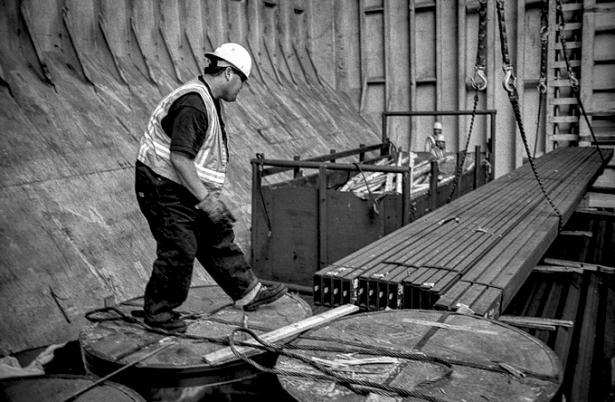
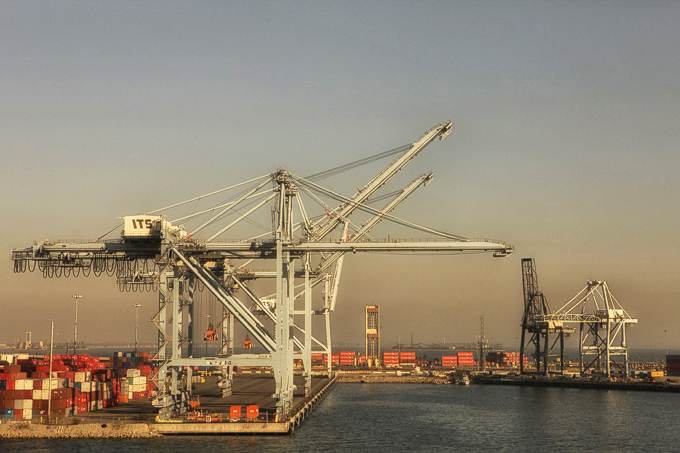
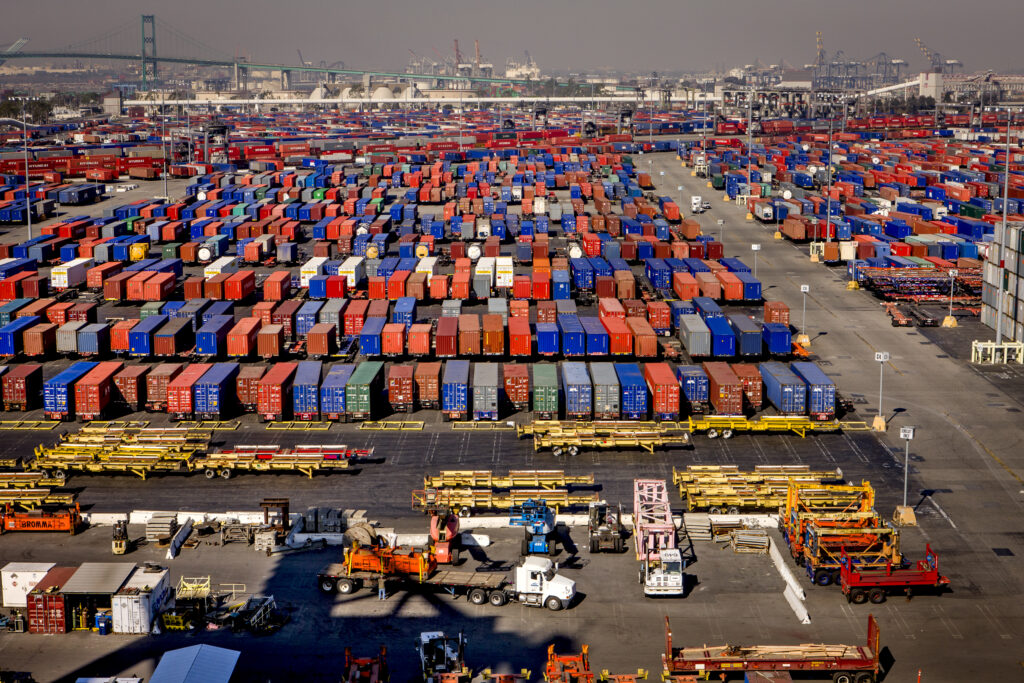
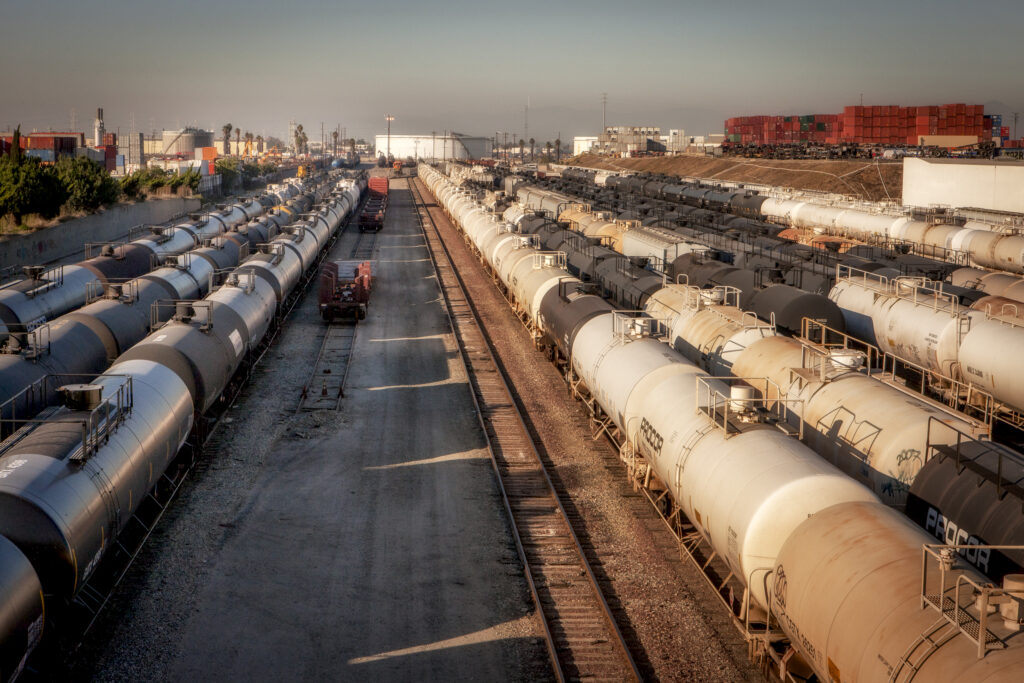
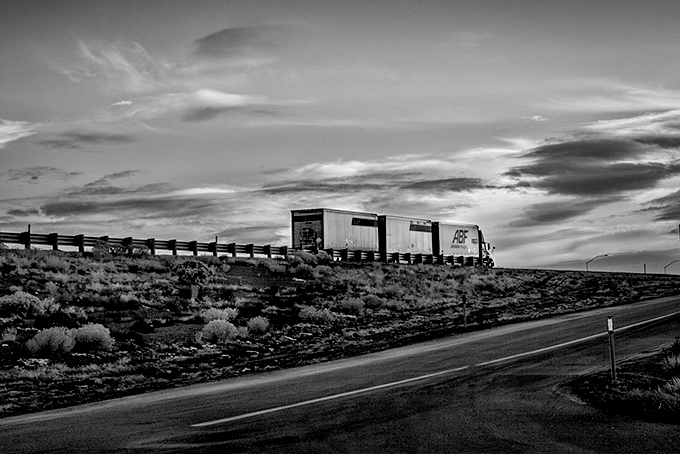
Spread the word